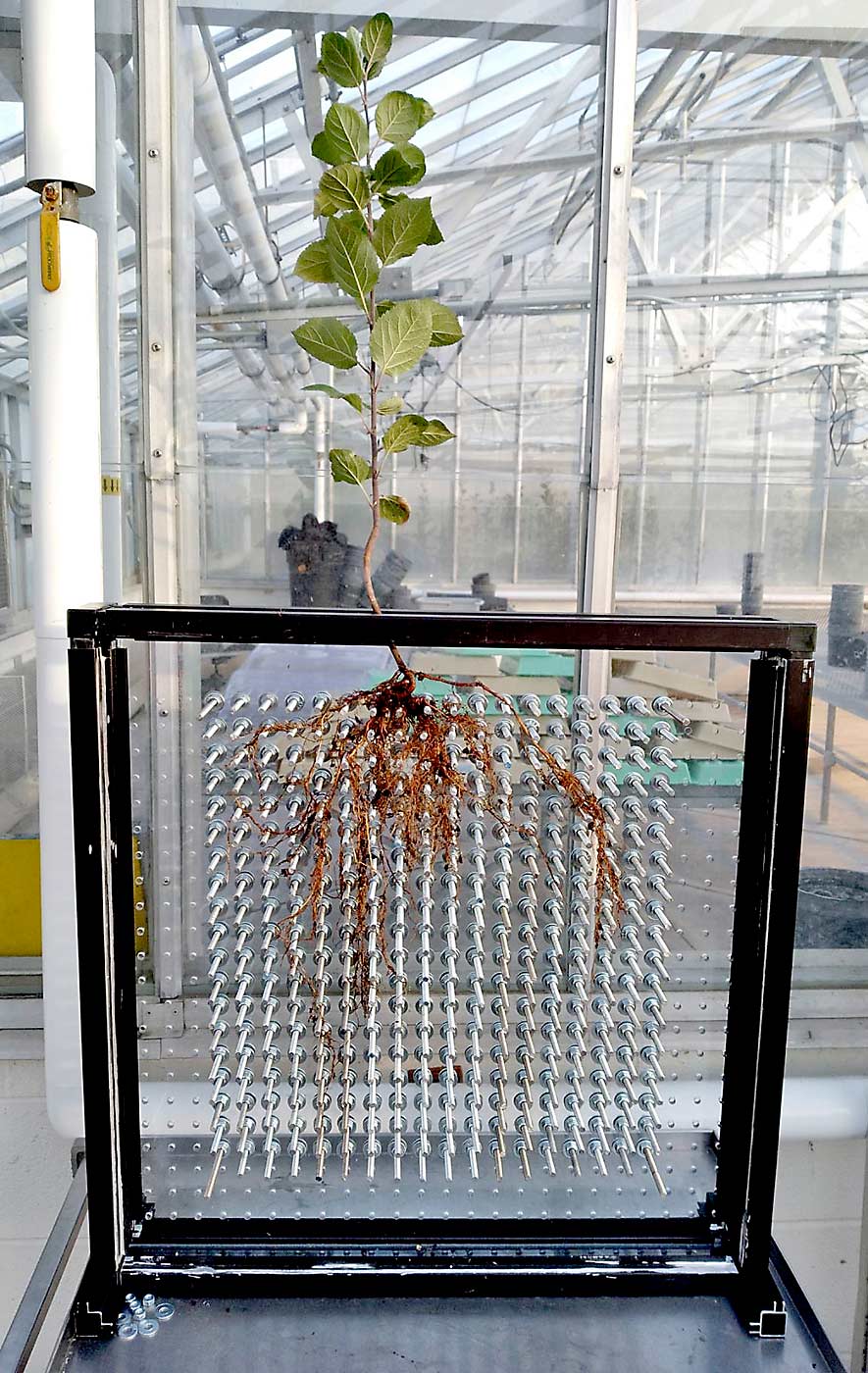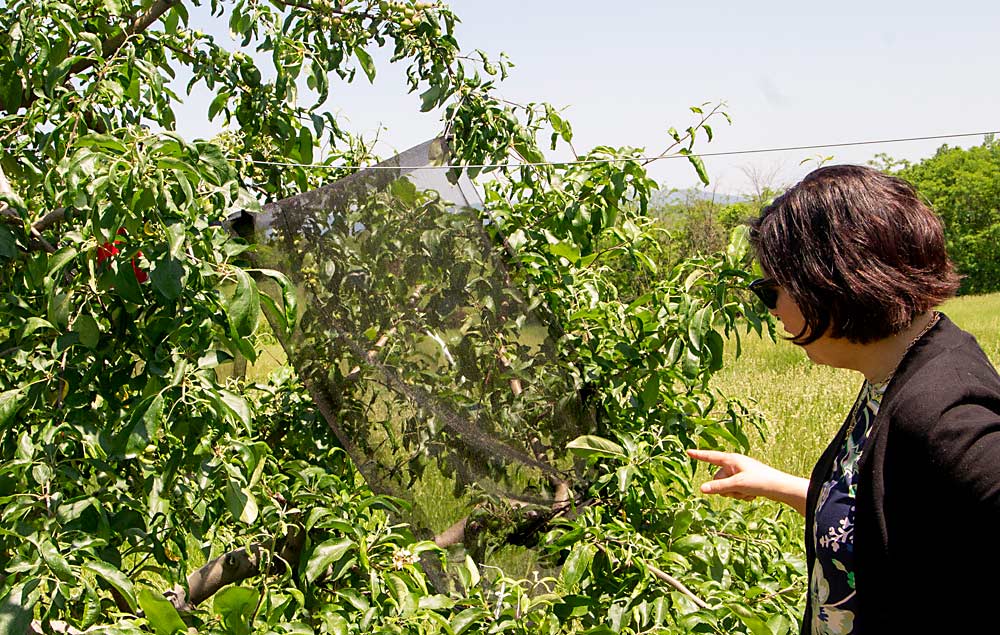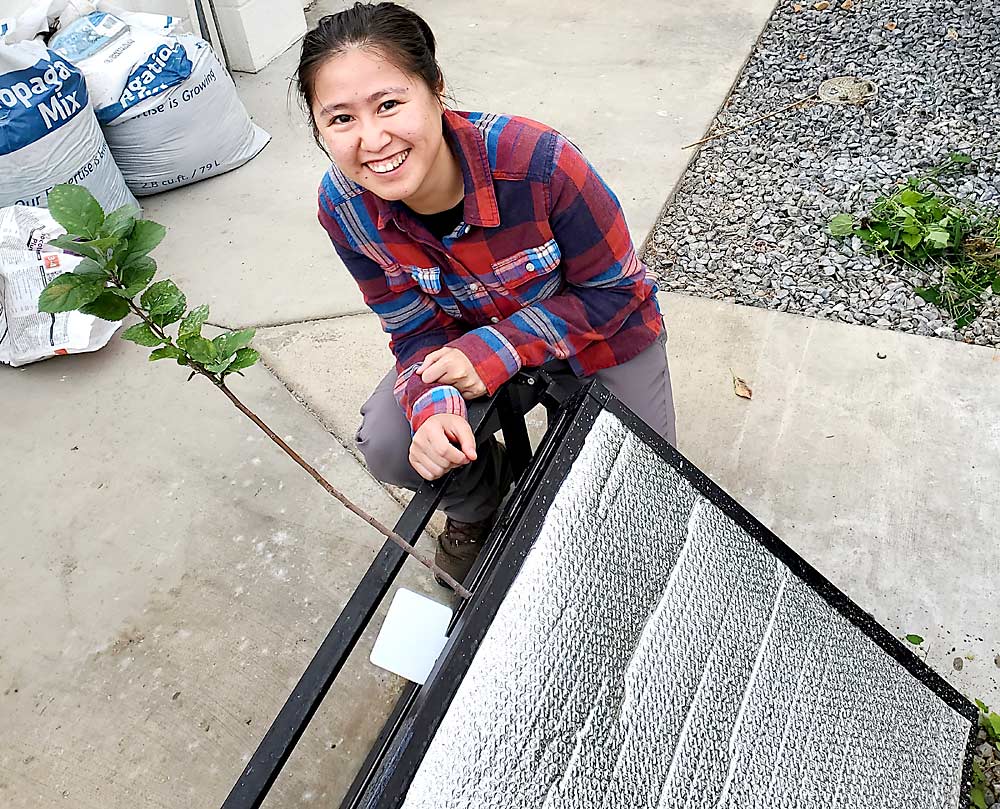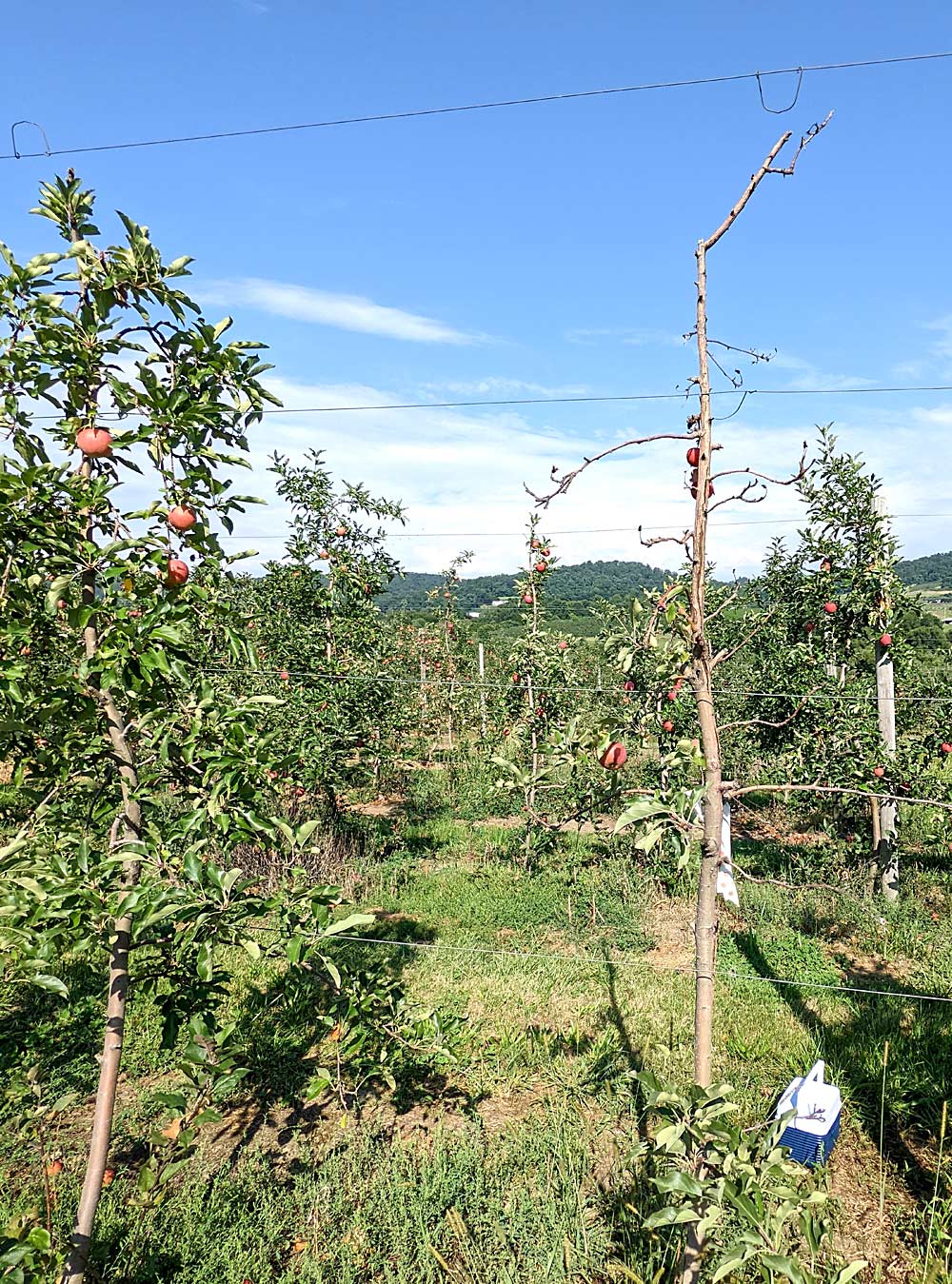
The Integrated Production and Automation Systems for Temperate Fruit Crops project at the U.S. Department of Agriculture’s Appalachian Fruit Research Station is comprised of five research teams with expertise in entomology, computer engineering, horticulture, soil science and plant pathology. The goal of our multidisciplinary project is to enable growers to increase both ecological sustainability and economic competitiveness in modern fruit production systems.
The first team, led by Tracy Leskey, conducts research developing effective monitoring tools and management strategies for invasive and persistent native insect pests in temperate fruit production. A project developing integrated pest management tactics for brown marmorated stink bug (BMSB), Halyomorpha halys, has spanned over a decade and involved nationwide and international collaborations. In 2012, the BMSB male-produced pheromone and pheromone synergist was discovered, leading to the development of pheromone-baited monitoring traps. These traps guide management decisions based on a threshold of adult captures and have reduced annual spray inputs by greater than 40 percent. Through studying BMSB landscape dispersal and feeding behavior, Leskey and collaborators developed an attract-and-kill strategy. High BMSB numbers are drawn to selected border trees baited with the H. halys pheromone and a killing agent, which reduces the need for insecticide inputs by over 70 percent.

Current research by Leskey’s team includes basic and applied research on the newly invasive spotted lanternfly (SLF), Lycorma delicatula. Greenhouse and field studies have shown that, although the invasive tree of heaven, Ailanthus altissima, is a preferred host, SLF can complete development on cultivated grapevine, Vitis vinifera, varieties and black walnut, Juglans nigra. Spotted lanternfly also utilizes these and other native hosts in the field throughout its life cycle; the group is performing molecular gut content analyses to identify feeding hosts throughout SLF development. Work on potential human-assisted transport via hitchhiking is also being conducted, including identification of speeds that dislodge SLF nymphs and adults from vehicles. Leskey’s team is also reevaluating mating disruption recommendations for codling moth and oriental fruit moth, as many of the recommendations are based on research conducted outside the U.S. more than three decades ago.
The second team, led by Amy Tabb, focuses on using computer vision and robotics in biological, agricultural or field settings. At a basic level, Tabb’s work is concerned with estimating the shape of objects and/or their location using sensors to automate tasks. One current project focuses on developing automated plant phenotyping technology, which would enable optimal identification of superior cultivars, clones, rootstocks and rootstock/scion combinations for improved crop quality.
The third team is led by Lisa Tang, who joined the research station in fall 2020 as the research horticulturist. Previously, she studied citrus flowering and fruit physiology under various stress conditions (drought, low temperatures, alternate bearing and greening disease) at the University of California, Riverside and University of Florida for her dissertation and postdoctoral research, respectively. The mission of Tang’s current program is to generate new knowledge in tree physiology and develop tools to enhance pome and stone fruit production under current and future climate scenarios.
One of her primary focuses is to investigate how apple roots, including root architecture and rootstock varieties, impact whole-tree physiology in response to abiotic stress. She aims to identify the root traits, genotypes and underlying mechanisms associated with stress resilience, such as drought and heat, in apple. To assess rootstock/scion interactions in orchard agroecosystems, her team planted a field trial in 2022 with plans for expansion with more rootstock varieties in the next two years.

Another direction of Tang’s research program centers around the nectarine selections developed by Kearneysville’s breeding team. The nectarines possess high sugar content with outstanding and complex flavors that distinguish them from other varieties, but very little is known about the underlying genetics or physiochemistry. Tang is currently working to determine the fruit composition of these selections and evaluate whether the high-sugar trait affects tree phenology or growth. The efforts will help clarify the genetic and physiological bases for the increased sugar levels and provide information for optimizing production practices to grow these novel nectarines.
The fourth team is led by soil scientist Andrew Bierer, who joined the research station in July 2021. Bierer earned his doctorate from Virginia Tech in 2019, studying soil macronutrient cycling, and studied soil carbon dynamics during a postdoctoral appointment. His research program is ramping up to investigate aspects of how the shifting climate will impact orchard crop production. Bierer is establishing an experimental site to empirically quantify carbon flows and allocation patterns in a commercial-scale apple orchard. This project aims to fill the knowledge gap pertaining to a production system’s carbon footprint, which is increasingly important as retailers adopt sustainability commitments and as environmental incentive programs and carbon markets develop.
The soils laboratory is also working with other aspects of industry sustainability pertaining to abiotic stresses. As an example, Bierer is developing a screening system that allows researchers to impose acute and chronic drought stress at varied extremities. Increased regional precision of rootstock/scion recommendations, mitigation strategies and improving abiotic tolerance indices for multiple genera of fruit tree are anticipated outcomes. The soils laboratory also aims to explore new production areas in marginal soils of Appalachia, for expanding regional specialty crop production.
The fifth team is led by Tami Collum, who also joined the research station in July 2021. She earned her doctorate from the University of Maryland, where she investigated the molecular mechanisms involved in virus systemic movement through plant vasculature tissues. The mission of Collum’s team is to develop sustainable management strategies for diseases of pome and stone fruit crops, both during production and after harvest.

One major focus is investigating rapid apple decline (RAD), a mysterious syndrome affecting young, dwarf apple trees —with no confirmed cause to date. It is likely that a complex of biotic and abiotic factors contributes to RAD — such as viruses, other microorganisms, insects and environmental stresses. Collum’s team is working to investigate the role latent and newly discovered apple viruses may be playing in tree decline. Her team is also characterizing the molecular responses that occur in apple trees during RAD. The goal of this work is to identity early molecular markers of RAD which will aid in the development and evaluation of management strategies.
Another area of focus is investigating alternatives to antibiotics and fungicides for disease management. Collum is currently working with collaborators to evaluate microorganisms and natural products with potential to boost plant immunity and prevent disease both during production and postharvest. The goal of this work is to provide growers with alternative disease control strategies to enhance the economic and ecological sustainability of orchard production.
—by Tracy Leskey, Laura Nixon, Amy Tabb, Lisa Tang, Andrew Bierer and Tami Collum
Tracy Leskey is the director and research leader at the U.S. Department of Agriculture’s Appalachian Fruit Research Station in Kearneysville, West Virginia. Laura Nixon is a visiting scientist with the station’s Innovative Fruit Production, Improvement and Protection research group. Also leading research areas within that group are agricultural engineer Amy Tabb, research horticulturist Lisa Tang, research soil scientist Andrew Bierer and research plant pathologist Tami Collum.






Leave A Comment